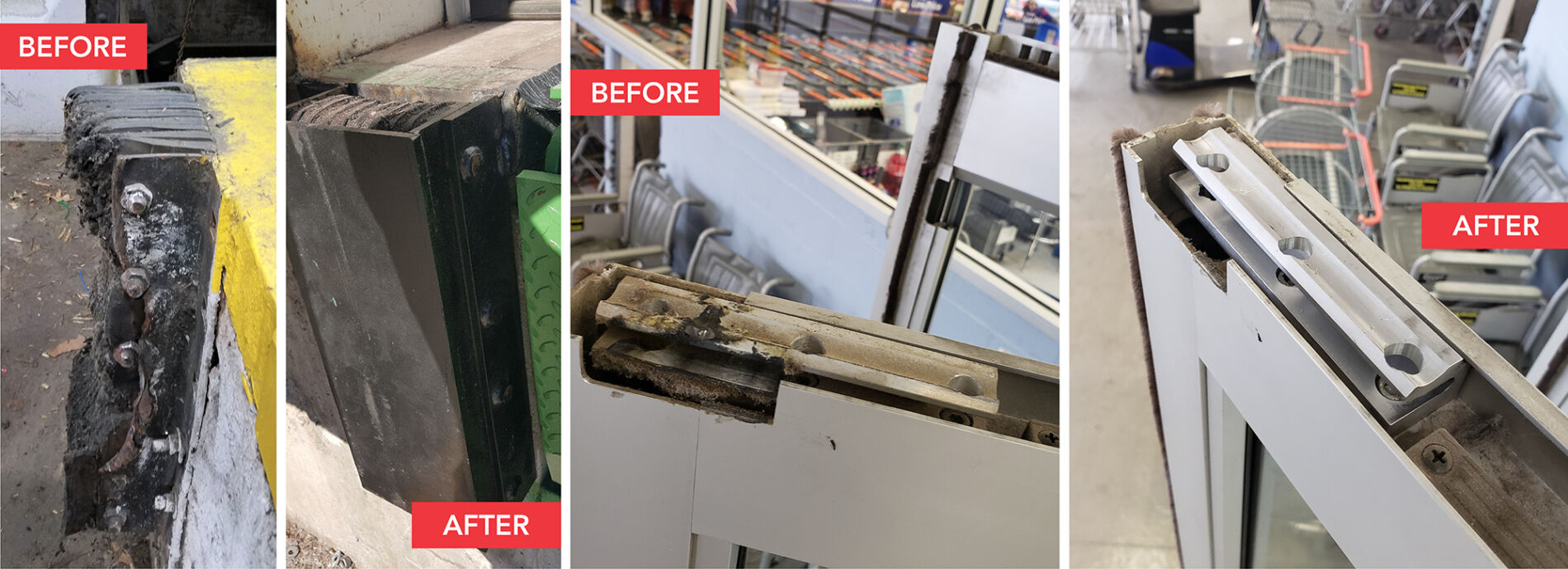The use of visual indicator locks, or occupancy indicator locks, has been commonplace in some applications for years. For example, public restrooms frequently use some type of indicator lock on the stall doors to provide increased privacy and convenience, as well as reducing unnecessary touchpoints for users.
In recent years, however, visual indicator locks have been developed and honed for many other types of applications and provide numerous additional solutions besides the privacy aspect of older visual indicator locks. In addition to the basic turn lock of a restroom stall, visual indicator lock solutions are now available as mortise locks, cylindrical locks, bored locks, deadbolt locks, and exit devices. Hardware is available in both mechanical and electrical styles, at multiple grade levels, with one or multiple indicator windows, and customization options for windows, messaging, and more.
Applications
The expansion of visual indicators on lock products and hardware allows them to be installed in many more types of facilities and for many more uses. From manufacturing to retail, to healthcare and education, occupancy indicators are increasing privacy, safety, and convenience for visitors and employees on more than restroom stall doors.
Healthcare facilities can use them for patient rooms, mothers’ rooms, and physician sleeping/on call rooms. These lock solutions can also increase safety when used on doors to testing or therapy rooms, such as radiology.
Educational facilities have seen a particularly significant increase in uses for visual indicator locks. Schools with practice rooms for music or speech or individual study rooms can benefit from hardware that provides a visual indication that the room is occupied so other students looking for an available room don’t disrupt those who are using the rooms. Faculty offices and, of course, restrooms are also popular locations for visual indicator locks to ensure privacy.
Privacy is not the only benefit of locks and hardware with visual indicators, however. Occupancy indicator locks also provide enhanced security to many places within schools. In fact, the Partner Alliance for Safer Schools (PASS) recommends using hardware with visual indicators in classrooms and throughout educational facilities.
Exit Devices
According to the PASS Safety and Security Guidelines (6th Edition), “exit devices should have a visual indicator so that security and building personnel can look at the device and determine if it is in a secure condition.” Doing so means that the doors don’t need to be manually checked to ensure they are securely locked, allowing personnel to move quickly around the building to ensure external doors are secure.
A visual indicator is particularly important on exit devices with a dogging feature as these devices can be put in a permanent unlocked state when needed. It is vital to the safety of students and staff and the overall security of the building that the dogging is removed as soon as possible to return the door to a locked state. The visual indicator provides quick and easy confirmation that the exit device is latched, and the door is secure.
Classroom Locks
PASS goes on to state that some functions of locks on classroom doors, or other doors where students and staff may shelter in the event of an intruder incident, are essential whether the locks are mechanical or electronic.
Most of these functions revolve around existing laws and guidelines for safety and egress, but they now also state that these doors should have visual indicators so occupants of the room can easily see if the lock is locked or unlocked.
More importantly, staff and faculty don’t have to go outside of the classroom to check if the door is locked when a visual indicator is present. For fire and life safety reasons, classroom doors need to be able to be locked from the outside but still allow occupants to quickly exit the room in the event of a fire or other emergency without needing to unlock the door. This applies to both mechanical and electronic locks, including locks tied to a networked system.
Today’s Visual Indicator Locking Solutions
Today, visual indicator locks are available in numerous styles including large indicator windows, vibrant colors including use of colors easy to read for people with colorblindness, large print, custom indication messages, 180-degree visibility of the indicator window, indicator windows on one or both sides of the lock, and locks that meet both Grade 1 or Grade 2 requirements in addition to other types of hardware, such as exit devices.
Code-compliant conversion kits to retrofit existing locks with a visual indicator are also available. These provide a cost-effective solution to meet the recommendation without having to replace every classroom lock in a school.
Visual indicators on classroom locks not only serve a practical purpose, but they also provide a sense of control and empowerment for staff to know they have their classroom secured. Furthermore, they provide peace of mind on a daily basis for staff and students to see they are safe inside their classroom and can keep their focus on learning. For parents and caregivers, they can feel confident that their children are safe at school with locks that clearly show when the classroom door is locked or not, all while maintaining a safe path of egress in the event of a fire or other emergency that requires evacuation.
There are numerous options for visual indicator locks for classrooms and other types of rooms. One of the most important aspects to consider when selecting a lock is whether it is compliant with all state and local regulations, as well as federal ones. Locks should meet the security goals of the facility as well as industry-accepted safety guidelines in addition to maintaining code compliance.
As schools continue to increase and improve their security measures, visual indicator locks are a key component to the overall security of the facility as well as the safety of students, staff and visitors.






